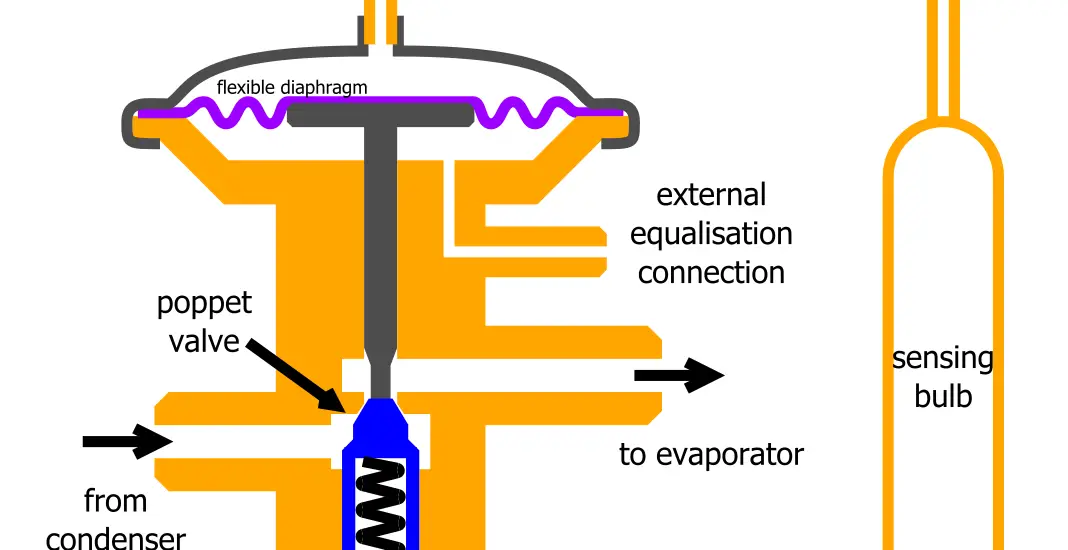Embarking on the task of learning how to adjust superheat on TXV doesn’t have to be daunting. This essential skill is attainable with a systematic approach. This guide will lead you through each stage, breaking down the complexity into simple, understandable steps.

Table of Contents
Tools Needed
Having the correct tools is a prerequisite in learning how to adjust superheat on TXV. Here’s what you will need:
Gauges: To measure the pressure accurately.
Check out this OMT AC Gauges, AC Manifold Gauge Set on Amazon.
Thermometer: A precise thermometer to record temperature readings is essential.
Wrench: A wrench suitable for adjusting the TXV.
Get this Crescent 4″ Adjustable Black Oxide Wrench from Amazon now for this task.
Safety Glasses and Gloves: For your protection during the adjustment process.
Gathering these tools beforehand not only saves time but also ensures a smooth and safe process.
Safety Precautions
Your safety is paramount when figuring out how to adjust superheat on TXV. Adhering to safety precautions safeguards you against potential hazards.
Always disconnect electrical connections to eliminate any risk of electrical shock.
Utilize safety glasses to protect your eyes, and gloves to shield your hands from sharp edges and harmful materials.
Keeping a first-aid kit nearby is also advisable for handling any minor accidents promptly.
Step-by-Step Guide on How to Adjust Superheat on TXV
In this section, we’ll guide you on how to adjust superheat on TXV.
Identify the TXV
The TXV, or Thermostatic Expansion Valve, serves as a pivotal component in your HVAC system, primarily situated near the evaporator coil. This valve moderates the amount of refrigerant flowing into the evaporator.
Before you start tinkering with it, ensure to study its structure and understand its functionalities well. It is usually made of brass and has an adjustment stem, sensing bulb, and inlet and outlet connections.
Comprehending these components and their roles would set a solid groundwork for the forthcoming steps.
Measure the Current Superheat
Having identified the TXV, the next pivotal step in learning how to adjust superheat on TXV is to measure the existing superheat level.
To do this, connect your gauge to the suction line to obtain the pressure reading.
Following this, use your thermometer to find out the suction line’s temperature.
These readings should be noted down diligently as they serve as the benchmark for your adjustment process, helping in maintaining the right balance during the adjustments.
Adjust the Valve
With the present readings documented, it’s time to initiate the adjustment. Locate the adjustment stem on the TXV.
Use your wrench to turn the stem; a clockwise turn will escalate the superheat while an anti-clockwise rotation diminishes it.
Each adjustment should be carried out meticulously, with slight modifications made each time to prevent overshooting the desired superheat level.
It’s a gradual process, and patience here is the key to fine-tuning the superheat to the optimal level.
Recheck the Superheat
Once you have adjusted the valve, give the system a few minutes to stabilize. This allows the changes to take effect properly.
Now, recheck the superheat using your gauge and thermometer to validate the adjustments made. Ensure that the new readings are in line with the specifications mandated for your particular HVAC system.
This step is quintessential in ensuring that your adjustment was carried out accurately.
Testing
The final stride in understanding how to adjust superheat on TXV is to test the system with the new settings.
Kickstart the system and scrutinize its performance meticulously for a considerable period. Keep an eye on the temperature and pressure readings, ensuring that they remain stable and within the recommended parameters.
Moreover, observe the cooling efficiency and ensure that there are no abnormal noises emanating from the system. Successful testing assures that you have attained the correct superheat adjustment, paving the way for a more efficient HVAC system.
Endowed with this detailed guide, you are now equipped to adjust the superheat on TXV competently. Remember, it’s a skill cultivated over time, therefore embrace each step with diligence and patience, leading to mastery in handling TXV adjustments.
Troubleshooting Common Errors
During your attempt to understand how to adjust superheat on TXV, you might encounter some issues such as inconsistent readings or unresponsive valves. It’s common to experience hiccups; therefore, do not get frustrated. Here are some tips:
Consult the Manual: Your HVAC system manual often contains solutions to common problems.
Seek Expert Advice: If stuck, don’t hesitate to consult with a professional technician for guidance.
